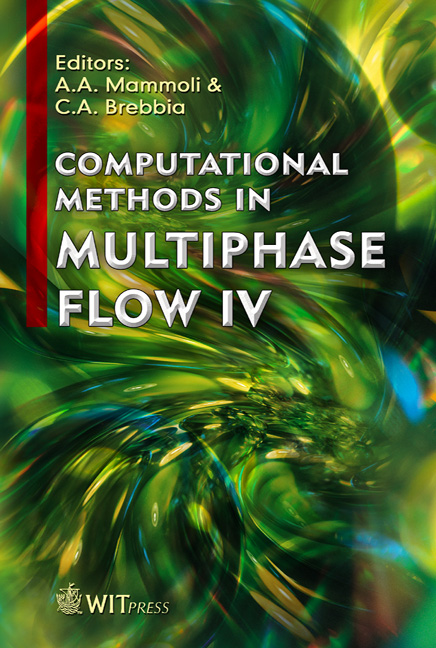Experimental Investigations Of Sedimentation Of Flocs In Suspensions Of Biological Water Treatment Plants
Price
Free (open access)
Transaction
Volume
56
Pages
10
Published
2007
Size
475 kb
Paper DOI
10.2495/MPF070281
Copyright
WIT Press
Author(s)
B. Zajdela, A. Hribernik & M. Hribersek
Abstract
This contribution deals with the movement of flocs in suspensions, as they appear in biological water treatment (BWT) plants. The first part of the work deals with the description of a model BWT plant, followed by the definition of a problem. The greatest attention is given to the geometrical and sedimentation characteristics of solid flocs, key parameters for developing a fast numerical procedure for simulation of flocs’ movements. An extensive analysis is presented of floc size distribution and their shapes. Based on the results of experimental investigations, the main geometrical parameters of the flocs are defined and calculated. The second part of the work deals with calculating floc density, based on free settling sedimentation tests and known empirical correlations for drag coefficient. Keywords: biological treatment plants, sedimentation, image analysis, size distribution, drag coefficient, density. 1 Introduction Today, wastewater treatment with the activated sludge is the most widespread process for removing dissoluble substances, small insoluble substances and colloidal organic pollutants from wastewater. The efficiency of the process primarily depends on growing biological biocenoze, consuming and consequently removing unwanted substances, and secondarily on accumulating the activated sludge into sludge flocs. The sludge flocs are subjected to circulation inside the wastewater processing tank and in the final phase of the flocs’ sedimentation process, separating the cleaned water from the accumulated
Keywords
biological treatment plants, sedimentation, image analysis, size distribution, drag coefficient, density.





